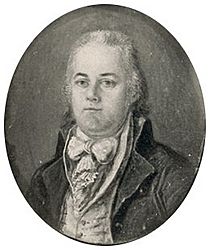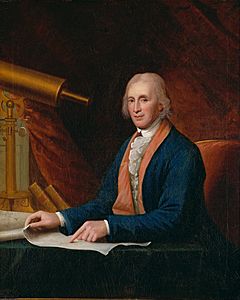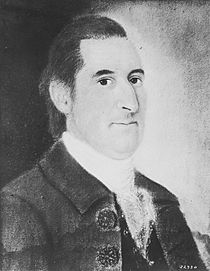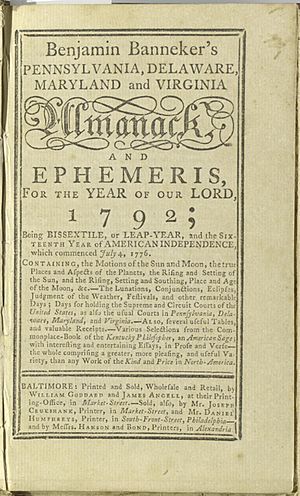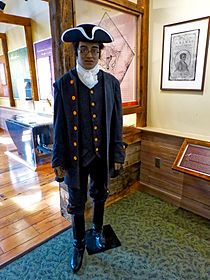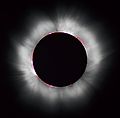Benjamin Banneker facts for kids
Quick facts for kids
Benjamin Banneker
|
|
|---|---|
 |
|
| Born | November 9, 1731 |
| Died | October 9, 1806 (aged 74) Baltimore County, Maryland, U.S.
|
| Nationality | American |
| Occupation | Scientist, surveyor, almanac author, farmer |
Benjamin Banneker (November 9, 1731 – October 9, 1806) was an amazing African American scientist, surveyor, and farmer. He also wrote popular books called almanacs. Many places like parks, schools, and streets are named after him to remember his important work.
Contents
Who Was Benjamin Banneker?
Benjamin Banneker was born on November 9, 1731, in Ellicott Mills, Maryland. His mother was a free African-American woman, and his father was a former slave. Benjamin learned to read from his white grandmother, Molly. He also went to a small Quaker school for a short time.
He owned a farm near Baltimore. Benjamin was very curious and loved to learn. He taught himself math by reading borrowed textbooks. He also taught himself about the stars and planets by watching the night sky. He became so good at astronomy that he could accurately predict when lunar and solar eclipses would happen!
Banneker's Public Work
Benjamin Banneker started his career by making clocks and surveying land. His skills caught the attention of the Ellicott brothers, who were well-known in the area.
Mapping the Capital
In 1791, Banneker worked with Andrew Ellicott to help map out the new capital city of the United States. This city would later become Washington, D.C.. The area was a square, about 10 miles (16 km) on each side. Banneker helped by using his astronomy skills to figure out exact starting points for the survey. He also kept a special clock to help with the measurements.
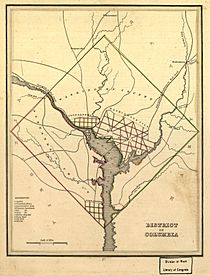
Banneker left the survey after about three months. He needed to focus on his farm and prepare his own almanac. Other surveyors, including Andrew Ellicott's brothers, finished mapping the area in 1792.
Writing Almanacs
After returning home, Banneker used his astronomy skills to create his own almanacs. These books predicted eclipses and planetary movements for the year 1792. He wanted to get his almanac published.
Andrew Ellicott helped Banneker by sending his work to James Pemberton. Pemberton was the president of a group that worked to end slavery. Other famous scientists, like David Rittenhouse, checked Banneker's work and said it was very accurate.
Printers in Baltimore agreed to publish Banneker's almanac. It was called Pennsylvania, Delaware, Maryland and Virginia Almanack and Ephemeris, for the Year of our Lord, 1792. This was the first of six almanacs he published between 1792 and 1797. Many different versions were printed in several cities.
Banneker's almanacs were full of useful information. They included:
- Times for the sun and moon to rise and set.
- Weather predictions.
- Dates for important events and holidays.
- Information about court dates.
- Helpful tips and recipes.
- Interesting essays and poems.
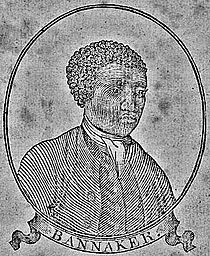
His almanacs also included strong messages against slavery. They showed that African Americans were just as smart and capable as anyone else. Many people, including those who wanted to end slavery, supported his work.
Banneker's Views on Equality
Benjamin Banneker was a strong believer in equality for all people. He used his almanacs and letters to share his views.
Letter to Thomas Jefferson
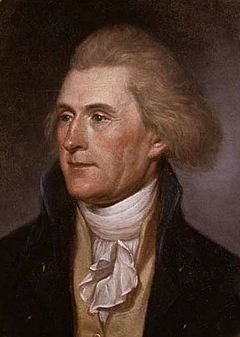
On August 19, 1791, Banneker wrote a famous letter to Thomas Jefferson. Jefferson had written the United States Declaration of Independence, which stated that "all men are created equal." Banneker reminded Jefferson of these words. He pointed out that Jefferson, despite writing about equality, still owned slaves.
Banneker included a copy of his 1792 almanac with the letter. He wanted to show Jefferson that African Americans had great talent and intelligence.
Jefferson replied to Banneker, saying he wished to see African Americans advance. He even sent Banneker's almanac to a famous French mathematician and abolitionist, the Marquis de Condorcet. Jefferson believed Banneker's work was proof that African Americans had equal talents.
Later Life and Death
Benjamin Banneker never married. He published his last almanac in 1797. He passed away on October 9, 1806, at the age of 74.
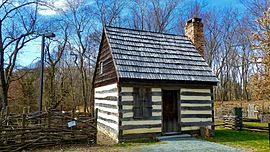
Sadly, a fire destroyed his log cabin on the day of his funeral. Many of his belongings and papers were lost. However, some of his important documents, like his almanac manuscript and letters, were saved and are now in museums.
Today, a monument stands near his unmarked grave in Oella, Maryland. It reminds everyone of Benjamin Banneker's amazing life and contributions.
Interesting Facts About Benjamin Banneker
- He built a wooden clock that struck on the hour. It worked perfectly until it was destroyed in the fire after his death.
- He accurately predicted a solar eclipse in 1789.
- In 1980, he was honored on a 15-cent stamp.
- He spent most of his life working on his family's tobacco farm in Baltimore County.
Artifacts
Many of Benjamin Banneker's belongings and papers were lost in the fire that destroyed his home. However, some important items survived and are now kept in museums and libraries. These artifacts help us learn more about his life and work.
- The American Antiquarian Society in Massachusetts has the original manuscript for Banneker's 1792 almanac.
- The Massachusetts Historical Society in Boston holds the handwritten letter Banneker sent to Thomas Jefferson.
- The Library of Congress has copies of Jefferson's reply to Banneker and his letter to the Marquis de Condorcet, where he praised Banneker's talents.
- The Maryland Center for History and Culture in Baltimore has Banneker's only remaining journal and other manuscripts.
- Some items Banneker used, like a drop-leaf table and candlesticks, are displayed at the Benjamin Banneker Historical Park and Museum in Oella, Maryland.
Legacy and Commemorations
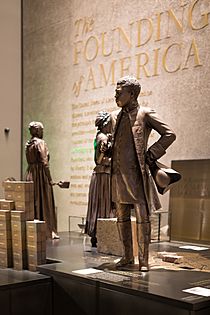
Over the years, many stories have grown about Benjamin Banneker, some of which might be exaggerated. However, his real accomplishments were truly remarkable. He is remembered as a symbol of intelligence and perseverance for African Americans.
Many places across the United States are named after him, including:
- Parks and recreational facilities.
- Schools and educational institutions.
- Streets and other public places.
In 1983, Rita Dove, who later became a famous American poet, wrote a poem about Banneker's life. His legacy continues to inspire people today.
See also
 In Spanish: Benjamin Banneker para niños
In Spanish: Benjamin Banneker para niños
Images for kids
-
Northeast No. 4 boundary marker stone of the original District of Columbia in Washington, D.C. and Prince George's County, Maryland (2005)
-
1783 oil portrait of Dr. Benjamin Rush by Charles Willson Peale


